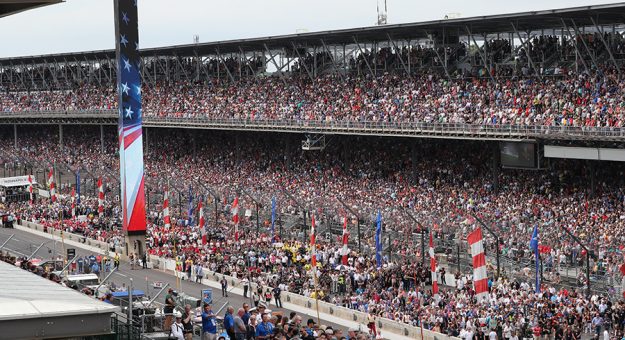The 104th Indianapolis 500 was the race COVID-19 could not stop. Still, the event that was delayed until Aug. 23 of last year because of the pandemic was the strangest and most surreal running of the historic event at Indianapolis Motor Speedway.
It was the first Indianapolis 500 in history that was not run in May and it was also completed without spectators.
When the 500 was initially postponed from May 25 to Aug. 23 it was done with the hope spectators would be allowed, but despite the efforts of speedway owner Roger Penske and his staff, that goal was not met.
As race day dawned, it just didn’t feel right. It was a beautiful, sunny and hot day, but an Indy 500 without fans held in August threw the motorsports world off its axis.
There were the traditional pre-race ceremonies, only without the Purdue Marching Band. Music was played over the public address system.
But on the track, last year’s Indianapolis 500 was as real as it gets. Scott Dixon appeared to have the best car as the Honda driver attempted to win the Indy 500 for the second time, but he could not shake Takuma Sato’s equally fast Honda.
Sato was in the lead when Oliver Askew crashed with four laps remaining. The race ended under the yellow flag and Sato celebrated his second Indy 500 victory.
Penske vowed the Indy 500 would return to its traditional Memorial Day weekend date in 2021 and hoped the pandemic would be contained to the point where spectators could return en masse to the fabled facility.
With three COVID-19 vaccines being distributed and a dramatic drop in the positivity rate, Penske remained optimistic that as many as 250,000 fans will be able to attend the 105th Indy 500 on May 30.
“We’re not making any predictions at all because anything I would say today could be completely wrong,” Penske said on March 23. “Our goal is to have 250,000. That’s what we want to have.
“It’s outside. We’ve got the biggest stadium in the world here and it’s a matter of where we’re going to be with the CDC (Center for Disease Control) and the governor (Eric Holcomb) and the mayor (Joe Hogsett), so I don’t have any number that I’d want to hang my hat on. It just shows you the interest in the race and we’ve got a lot of people that are waiting, and we have our general admission and what else we normally do on that weekend, but I think the good news is we’re going to have the race and it will be limited or be open based on what the current numbers are.”
Penske and his staff have had ongoing meetings with Governor Holcomb, Mayor Hogsett, officials with the Indiana Department of Health and Dr. Virginia A. Caine, director of the Marion County Public Health Department, to come up with a feasible plan.
Penske and Boles have been working on the premise of ensuring the largest number of spectators possible who can safely attend the Indy 500.
“We’ve gone through every single different kind of protocol and option and haven’t decided which one is the one we are going to go with,” Boles said on April 9. “There are a lot of things we are considering.
“We are going to do what we have to do to get the most people here at the speedway on May 30 and if we can, we are going to do what we have to do to make sure everybody who wants to be here can be here for the Indy 500.
“From our standpoint, we have been working very closely with the state of Indiana,” Boles continued. “The governor wants as many people here as possible. We are also working with the city of Indianapolis. The metrics in the state of Indiana are up a little bit from where they were a few weeks ago, but they are still in a much better place than we were a year ago. All of these vaccinations coming on board, we are really confident in making those plans.
“We are really confident. Roger Penske is 100 percent focused on as many fans in the stands as we can have, and we don’t want to do a second year without fans.
“We are going to have fans here.”
